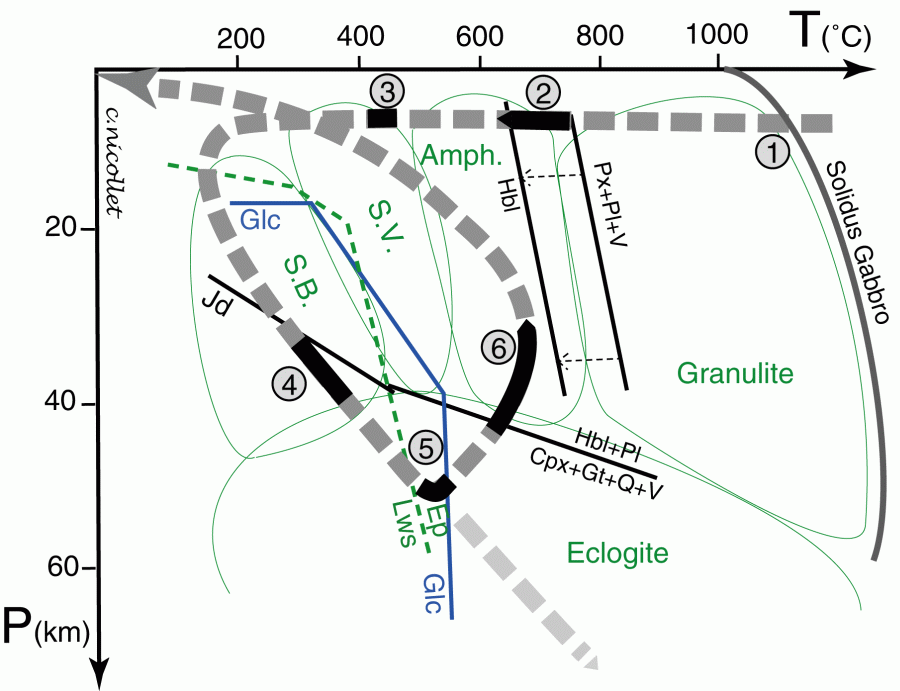
If the (meta)gabbro is subsequently buried in a subduction zone, it will exhibit mineralogy typical of the BlueSchists facies (S.B.) (Sample 4), of the Eclogite facies (Sample 5).When the oceanic lithosphere is completely subducted, the crust of the continental margins can collide. Eclogite can be incorporated into this collision.
At the beginning of the collision, when the continental crust is underlain by the eclogitised portion of oceanic crust, the latter is driven towards the surface while the thermal gradient evolves towards higher T. The pressure on the eclogite decreases as this one warms up: the rock (Sample 6) equilibrates under amphibolite facies conditions until the eclogite minerals disappear.
When convergence stops, the thickened continental crust is gravitationally unstable. It thins to the normal thickness of the crust of a stable lithosphere. Deep samples go back to the surface.
![]() Back to the Metamorphism Course , or Pétrologie Endogène or to the PhotoGallery or to the Home Page ?
Back to the Metamorphism Course , or Pétrologie Endogène or to the PhotoGallery or to the Home Page ?